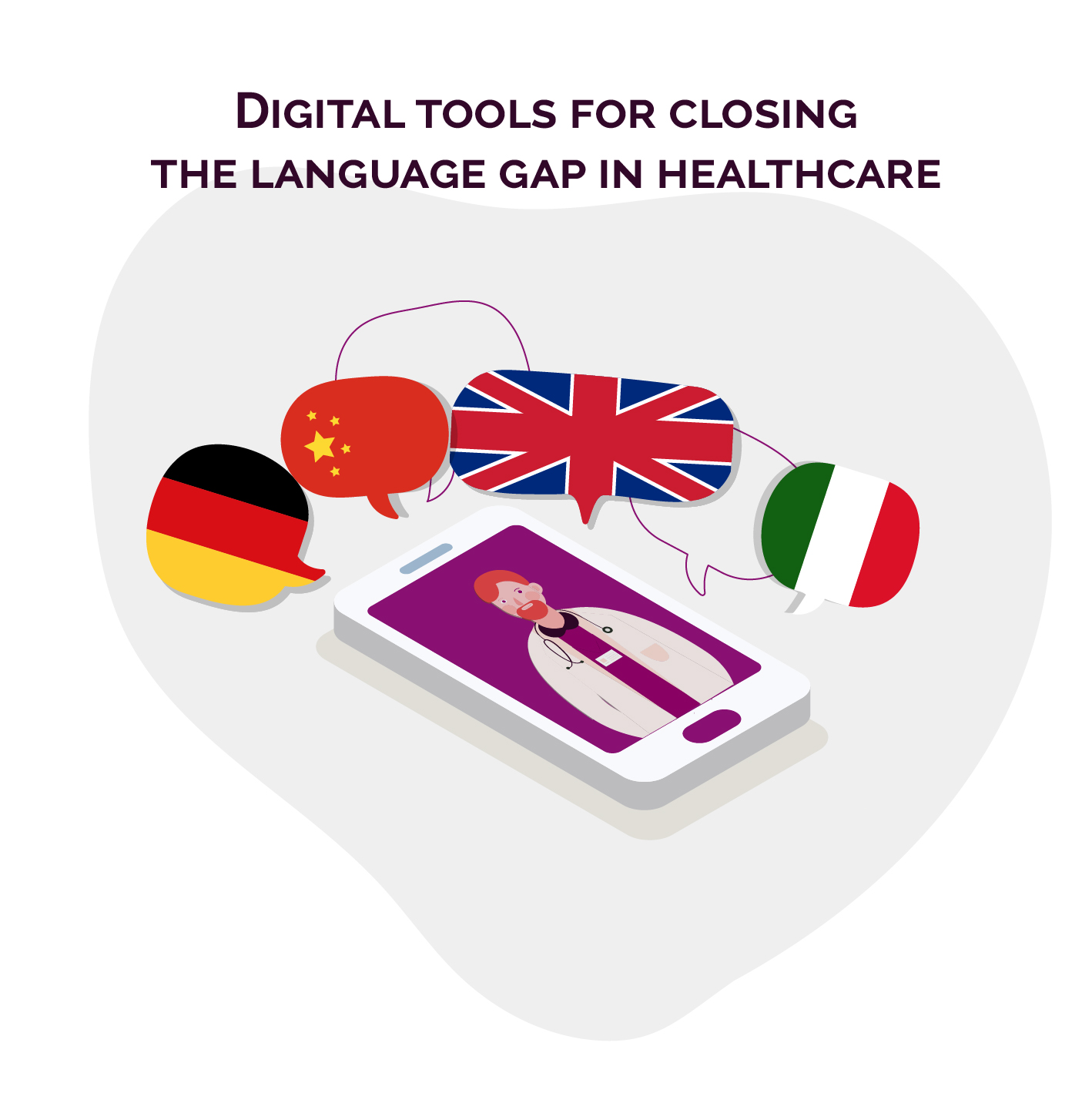
Digital tools for closing the language gap in healthcare
A significant roadblock to healthcare and telemedicine that, we believe, is not often considered is language. If telemedicine aims to provide on-demand healthcare, it must first begin to integrate greater language access and create better accessibility for all.
The ability to convey essential health care needs and simple safety messages are essential in a healthcare setting. In English speaking countries, like the USA, Canada, and Australia, there are challenges in dealing with patients who aren’t fluent in English and this can be life threatening; if one can imagine a patient misinterpreting a doctor’s instructions for care1. In a country like Australia, where nearly half of the population was either born overseas or have had at least one parent born overseas, there is approximately 300 different languages spoken. This makes providing quality healthcare in their language, other than English, sometimes extremely difficult. The use of professional interpreters is considered the gold standard. However, due to cost, access, availability, and time constraints, the use of professional interpreters in healthcare is often limited.
With telemedicine continuously growing around the world there is now a strong bridge between doctors and patients, however communication in the same language is not always guaranteed, particularly in the case of emergencies2. Everyday automatic voice translation systems, such as Google Translate, are used by doctors to communicate with patients who do not speak the same language, but there are definite limitations to the accuracy of these systems. Therefore, video remote interpreting (VRI) platforms where there is access to world’s languages (including sign language) are extremely important in the continual growth of telemedicine2. VRI provides a solution that can be integrated into any system, whereby interpreters can be accessed on-demand by remote healthcare workers and can help ensure patients feel confident about the care they receive.
Recently, there was a study published from Australia that looked at a number of iPad applications that may be used for effective communication between a doctor and patient who do not speak the same language. Of the 15 free iPad applications tested, 2 were rated as suitable for everyday communication in healthcare settings, culturally and linguistically diverse (CALD) Assist and Talk To Me3. Both contained simple and appropriate pre-set health phrases and did not contain conversations that are normally within the realm of professional interpreters; ideal for situations that interpreters are not currently used.
References
1. Meuter, R.F. et al., 2015. Overcoming language barriers in healthcare: A protocol for investigating safe and effective communication when patients or clinicians use a second language. BMC Health Serv Res, 15:371.
2. Khander, A. et al., 2017. Identification and evaluation of medical translator mobile applications using an adapted application scoring system. Telemed J E Health, 24(8):594-603.
3. Panayiotou, A. et al., 2019. Language Translation Apps in Health Care Settings: Expert Opinion. JMIR mHealth and uHealth, 7(4):e11316.

